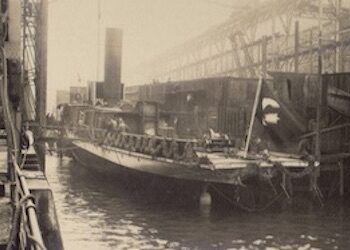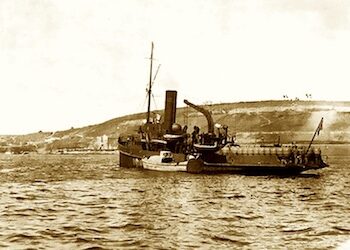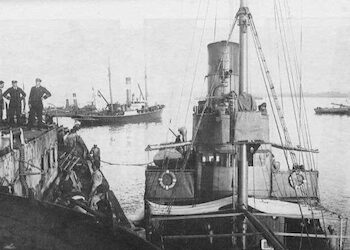| Type | Minelayer | Hull | Steel |
| Displacement | 365 tonnes | Engines | 2 triple 3 cyl. vertical engines |
| Length | 40.2 m | Machinery | Steam, 2 shafts |
| Beam | 7.5 m | Speed | 18 kts |
| Draught | 3.4 m | Complement | - |
| Armament | 2 × 47mm SK L/45 C/99 Krupp quick-firing guns; 40 mines | ||
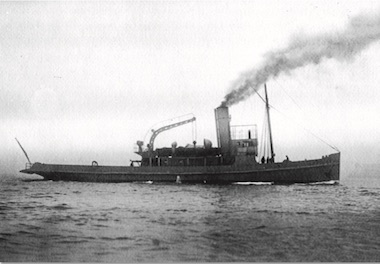
Minelayer Nusrat, launched from Schiff & Maschinenbau AG 'Germania' at Kiel, Germany on 4 December 1911, and commissioned by the Ottoman Navy in 1913, holds a notable place in naval history due to its involvement in key events during the Gallipoli campaign and its subsequent role in maritime operations.
 On 15 January 1915, the Nusrat encountered the French submarine Saphir while stationed in the Dardanelles. In conjunction with two other Turkish vessels, the Nusrat engaged the Saphir, resulting in the sinking of the submarine. The Nusrat's actions demonstrated both its operational effectiveness and its humanitarian commitment, as it successfully rescued 13 crew members from the Saphir.
On 15 January 1915, the Nusrat encountered the French submarine Saphir while stationed in the Dardanelles. In conjunction with two other Turkish vessels, the Nusrat engaged the Saphir, resulting in the sinking of the submarine. The Nusrat's actions demonstrated both its operational effectiveness and its humanitarian commitment, as it successfully rescued 13 crew members from the Saphir.
A significant milestone in the Nusrat's history occurred on the night of 7/8 March 1915, when it laid a 26-mine barrage in the Dardanelles, strategically positioning the mines parallel to the shore in a way unexpected by the commanders of the Allied frorces. This defensive measure played a pivotal role in impeding the progress of the Allied fleet, ultimately contributing to their defeat in their attempt to penetrate the straits on 18 March 1915. On that fateful day, it was the mines laid by Nusrat, supported by coastal artillery fire, which sank the British warships Irresistible, Ocean and the French battleship Bouvet, and left the British battlecruiser Inflexible heavily damaged.
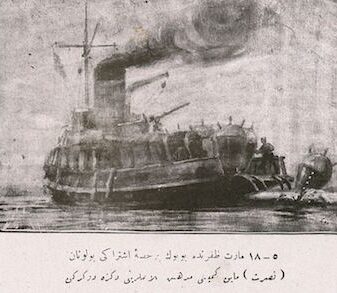
Following its wartime service, the Nusrat underwent several phases of operation and renovation. From 1918 to 1926, it was stationed in Istanbul and utilized as a mine search ship in the Sea of Marmara. Subsequently, it underwent refits at the shipyards in Gölcük in 1926-1927, enhancing its operational capabilities.
In 1937, Nusrat was renamed Yardım and repurposed as a diver support ship, only to regain its original name in 1939. Its active service continued until its decommissioning in 1955, after which it was sold to a private company in 1962 and operated as a cargo ship until 1966.
By 1989, Nusrat had deteriorated significantly, prompting its rescue from the port of Mersin and subsequent sinking in 1990. However, it was salvaged and transferred to Mersin City Hospital and the Turkish Red Crescent for ownership, though their attempts to utilize the vessel proved futile.
In 2003, Nusrat underwent extensive renovation and was repurposed as a museum ship, offering insights into naval history and maritime heritage. Its significance was further underscored in 2010 when the Turkish Navy launched a fully functional replica in Çanakkale, ensuring the preservation and commemoration of its legacy for future generations.
![]()
